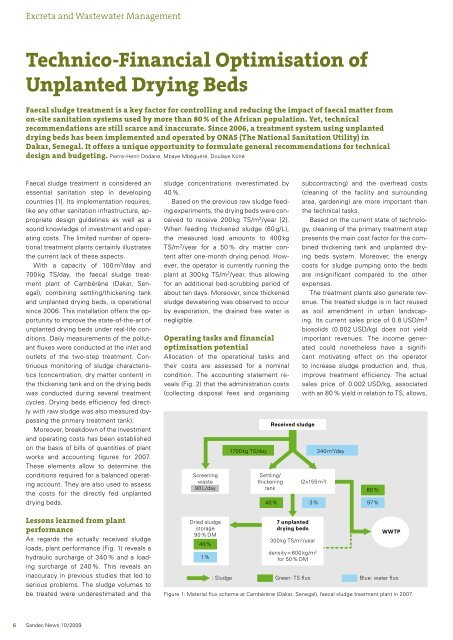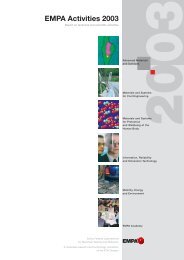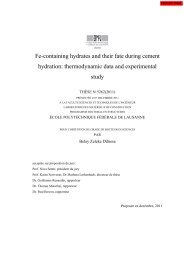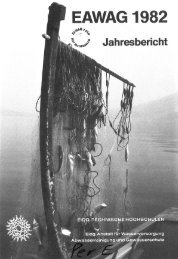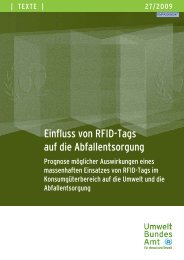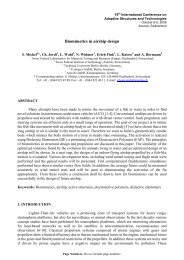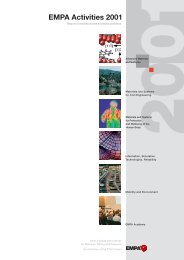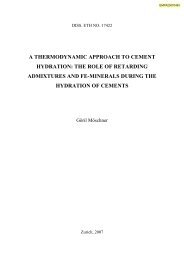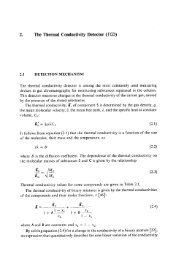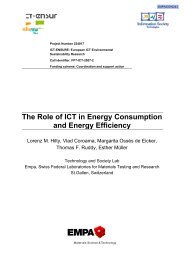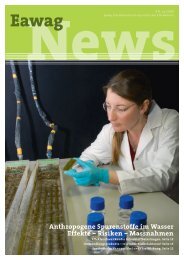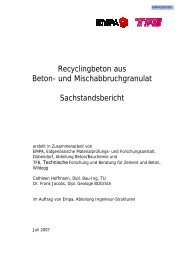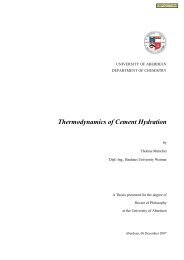Sandec - Eawag
Sandec - Eawag
Sandec - Eawag
You also want an ePaper? Increase the reach of your titles
YUMPU automatically turns print PDFs into web optimized ePapers that Google loves.
Excreta and Wastewater Management<br />
Technico-Financial Optimisation of<br />
Unplanted Drying Beds<br />
Faecal sludge treatment is a key factor for controlling and reducing the impact of faecal matter from<br />
on-site sanitation systems used by more than 80 % of the African population. Yet, technical<br />
recommendations are still scarce and inaccurate. Since 2006, a treatment system using unplanted<br />
drying beds has been implemented and operated by ONAS (The National Sanitation Utility) in<br />
Dakar, Senegal. It offers a unique opportunity to formulate general recommendations for technical<br />
design and budgeting. Pierre-Henri Dodane, Mbaye Mbéguéré, Doulaye Koné<br />
Faecal sludge treatment is considered an<br />
essential sanitation step in developing<br />
countries [1]. Its implementation requires,<br />
like any other sanitation infrastructure, appropriate<br />
design guidelines as well as a<br />
sound knowledge of investment and operating<br />
costs. The limited number of operational<br />
treatment plants certainly illustrates<br />
the current lack of these aspects.<br />
With a capacity of 100 m 3 /day and<br />
700 kg TS/day, the faecal sludge treatment<br />
plant of Cambérène (Dakar, Senegal),<br />
combining settling/thickening tank<br />
and unplanted drying beds, is operational<br />
since 2006. This installation offers the opportunity<br />
to improve the state-of-the-art of<br />
unplanted drying beds under real-life conditions.<br />
Daily measurements of the pollutant<br />
fluxes were conducted at the inlet and<br />
outlets of the two-step treatment. Continuous<br />
monitoring of sludge characteristics<br />
(concentration, dry matter content) in<br />
the thickening tank and on the drying beds<br />
was conducted during several treatment<br />
cycles. Drying beds efficiency fed directly<br />
with raw sludge was also measured (bypassing<br />
the primary treatment tank).<br />
Moreover, breakdown of the investment<br />
and operating costs has been established<br />
on the basis of bills of quantities of plant<br />
works and accounting figures for 2007.<br />
These elements allow to determine the<br />
conditions required for a balanced operating<br />
account. They are also used to assess<br />
the costs for the directly fed unplanted<br />
drying beds.<br />
Lessons learned from plant<br />
performance<br />
As regards the actually received sludge<br />
loads, plant performance (Fig. 1) reveals a<br />
hydraulic surcharge of 340 % and a loading<br />
surcharge of 240 %. This reveals an<br />
inaccuracy in previous studies that led to<br />
serious problems. The sludge volumes to<br />
be treated were underestimated and the<br />
<strong>Sandec</strong> News 10/2009<br />
sludge concentrations overestimated by<br />
40 %.<br />
Based on the previous raw sludge feeding<br />
experiments, the drying beds were conceived<br />
to receive 200 kg TS/m 2 /year [2].<br />
When feeding thickened sludge (60 g/L),<br />
the measured load amounts to 400 kg<br />
TS/m 2 /year for a 50 % dry matter content<br />
after one-month drying period. However,<br />
the operator is currently running the<br />
plant at 300 kg TS/m 2 /year, thus allowing<br />
for an additional bed-scrubbing period of<br />
about ten days. Moreover, since thickened<br />
sludge dewatering was observed to occur<br />
by evaporation, the drained free water is<br />
negligible.<br />
Operating tasks and financial<br />
optimisation potential<br />
Allocation of the operational tasks and<br />
their costs are assessed for a nominal<br />
condition. The accounting statement reveals<br />
(Fig. 2) that the administration costs<br />
(collecting disposal fees and organising<br />
Screening<br />
waste<br />
90 L/day<br />
Dried sludge<br />
storage<br />
90% DM<br />
40%<br />
1%<br />
: Sludge<br />
1700 kg TS/day<br />
Settling/<br />
thickening<br />
tank<br />
Received sludge<br />
40% 3%<br />
unplanted<br />
drying beds<br />
subcontracting) and the overhead costs<br />
(cleaning of the facility and surrounding<br />
area, gardening) are more important than<br />
the technical tasks.<br />
Based on the current state of technology,<br />
cleaning of the primary treatment step<br />
presents the main cost factor for the combined<br />
thickening tank and unplanted drying<br />
beds system. Moreover, the energy<br />
costs for sludge pumping onto the beds<br />
are insignificant compared to the other<br />
expenses.<br />
The treatment plants also generate revenue.<br />
The treated sludge is in fact reused<br />
as soil amendment in urban landscaping.<br />
Its current sales price of 0.8 USD/m 3<br />
biosolids (0.002 USD/kg) does not yield<br />
important revenues. The income generated<br />
could nonetheless have a significant<br />
motivating effect on the operator<br />
to increase sludge production and, thus,<br />
improve treatment efficiency. The actual<br />
sales price of 0.002 USD/kg, associated<br />
with an 80 % yield in relation to TS, allows,<br />
(2x155 m 3 )<br />
300 kg TS/m 2 /year<br />
density = 600 kg/m 3<br />
for 50% DM<br />
340 m 3 /day<br />
Figure 1: Material flux scheme at Cambérène (Dakar, Senegal), faecal sludge treatment plant in 2007.<br />
60%<br />
97%<br />
WWTP


